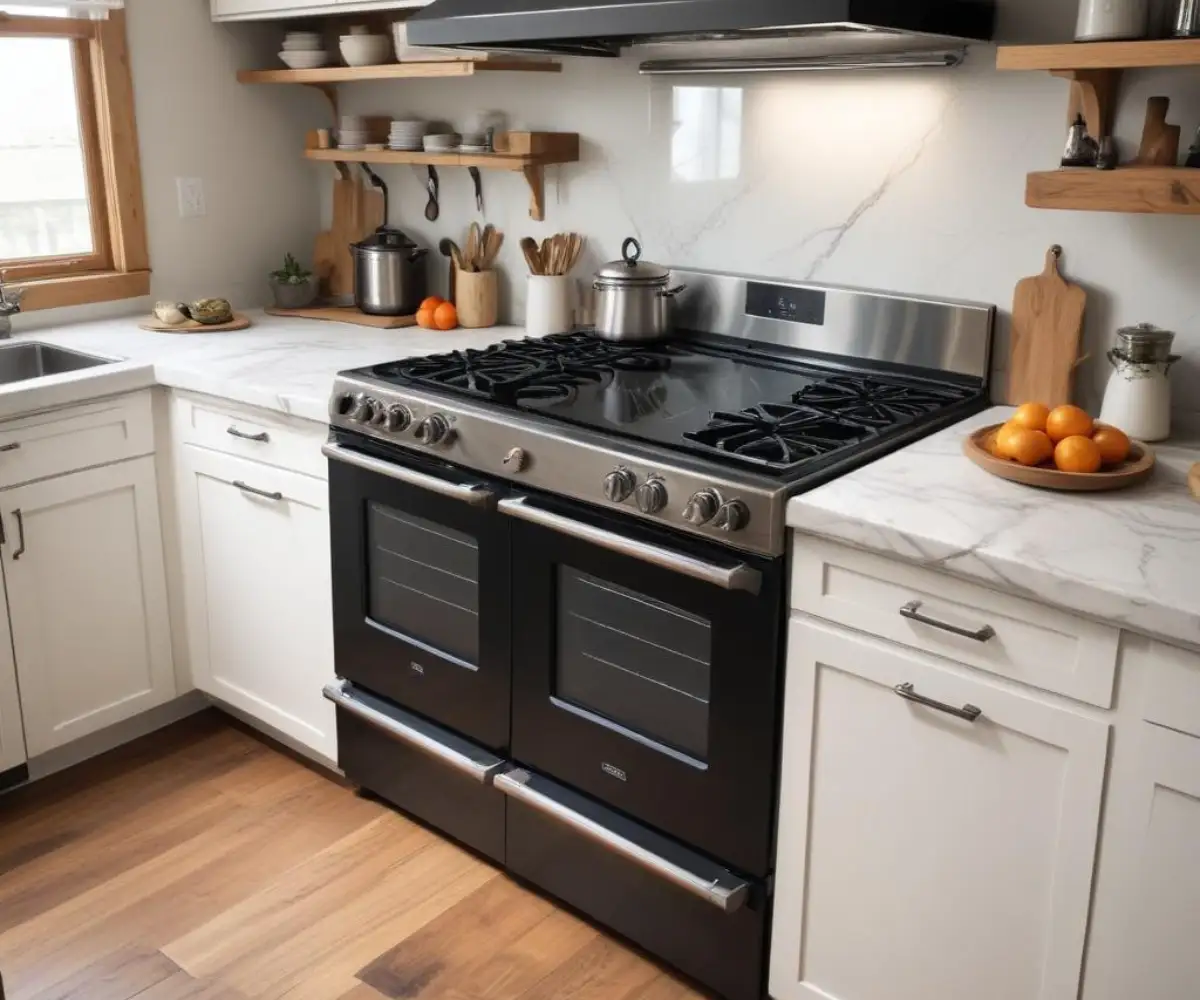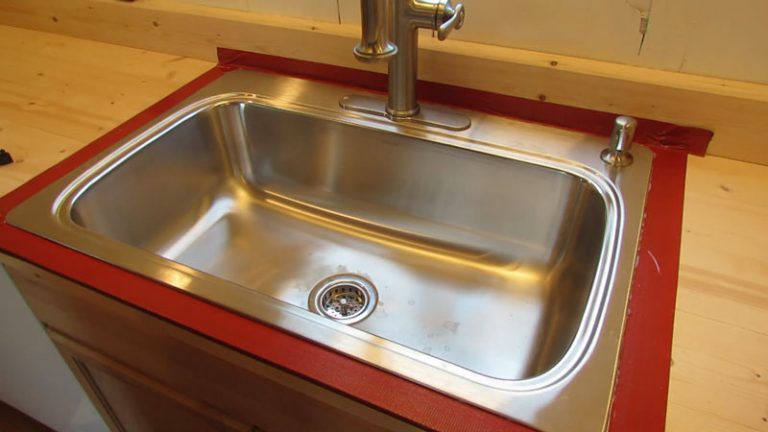Gas to Electric Stove Conversion Cost: Don’t Get Burned!
You’re standing in your kitchen, staring at your trusty gas stove, but a thought keeps bubbling up: is it time for a change? Perhaps you’ve read about the indoor air quality concerns associated with gas appliances, or maybe the sleek look and precision of a modern induction cooktop has caught your eye. Whatever the reason, you’re asking the big question: “What is the real cost to convert my gas stove to electric?”
The answer, you’ll soon discover, is more complex than just the price tag of a new appliance. This conversion is a multi-step process involving skilled professionals, potential electrical upgrades, and a few hidden expenses that can take homeowners by surprise. This guide will break down every dollar, decision, and detail to give you a clear and honest picture of the total investment required.
You'll Learn About
Why More Homeowners Are Ditching Gas for Electric
The shift from gas to electric cooking is a growing trend, driven by a combination of health, safety, and performance benefits. Understanding these motivators is the first step in deciding if this significant kitchen upgrade is the right choice for you and your family.
Health and Indoor Air Quality
One of the most compelling reasons for making the switch is the impact on your home’s air. Gas stoves release a cocktail of pollutants directly into your kitchen, including nitrogen dioxide (NO2), carbon monoxide (CO), and formaldehyde. Studies have increasingly linked these emissions to respiratory issues and other health problems, making electric options an appealing alternative for a healthier living environment.
Superior Cooking and Safety
Modern electric stoves, especially induction models, offer a level of cooking performance that often surpasses gas. Induction technology provides incredibly fast heating, precise temperature control, and a safer cooking surface that only heats the pan, not the surrounding area. This eliminates the risks of open flames and gas leaks, providing peace of mind, especially in households with children or pets.
Ease of Cleaning and Maintenance
Let’s be honest: cleaning a gas stove can be a chore, with its heavy grates and intricate burner components. Electric stoves with smooth ceramic or glass tops offer a flat, seamless surface that can be wiped clean in seconds. This ease of maintenance is a significant quality-of-life improvement for any home cook.
Unpacking the Costs: A Detailed Financial Breakdown
The total cost of converting from a gas to an electric stove is a sum of several parts. It’s crucial to budget for not just the appliance itself, but also for the essential labor and potential modifications your kitchen and electrical system will require. Let’s break it down piece by piece.
Choosing Your Weapon: Electric Stove Types & Prices
Your first major expense is the new electric range. Prices can vary dramatically based on the type, features, and brand you choose. Understanding the differences is key to selecting the right appliance for your budget and cooking style.
From budget-friendly coil tops to high-tech induction ranges, the market is full of options. Features like convection ovens, built-in air fryers, and smart home connectivity will also influence the final price.
| Stove Type | Average Price Range | Pros | Cons |
|---|---|---|---|
| Electric Coil | $400 – $800 | Lowest initial cost, durable, works with all cookware. | Slow to heat/cool, uneven heating, difficult to clean. |
| Electric Smooth-Top (Ceramic/Glass) | $600 – $2,500 | Easy to clean, sleek modern look, more even heating than coil. | Can scratch easily, requires flat-bottomed pans, slower response than induction. |
| Induction | $1,000 – $4,000+ | Fastest heating, precise temperature control, energy-efficient, safest surface. | Highest initial cost, requires magnetic cookware (cast iron, stainless steel). |
Assembling Your Team: The Electrician and the Plumber
This is not a DIY project. The conversion requires licensed professionals to ensure it’s done safely and up to code. You will need to hire both an electrician and a plumber or gasfitter.
Electrician Costs: The Biggest Variable
This is typically the most significant labor cost. Gas stoves run on a standard 120-volt outlet, but electric stoves require a dedicated 240-volt, 40- or 50-amp circuit. An electrician must run a new, thicker-gauge wire from your home’s main breaker panel to the stove’s location and install a special 240-volt outlet. The cost for this service can range from $250 to over $1,000.
Factors that influence this cost include the distance between your electrical panel and the kitchen, the accessibility for running the new wire (through an open basement is easier and cheaper than through finished walls), and the age of your home’s wiring.
Plumber/Gasfitter Costs: A Non-Negotiable Safety Step
Before your new electric stove can be installed, the existing gas line must be safely and permanently disconnected and sealed. A licensed plumber or gasfitter will perform this crucial task, which typically costs between $75 and $250. This involves shutting off the gas, cutting the pipe, and capping it to prevent any possibility of a future leak.
The “Gotchas”: Unexpected Expenses to Budget For
Beyond the appliance and primary labor, several other potential costs can arise during a gas-to-electric stove conversion. Being aware of these “hidden” expenses can save you from budget-breaking surprises.
Electrical Panel Upgrade: If your current breaker box is old, full, or lacks the capacity to handle a new 240-volt circuit, it will need to be upgraded. A full panel upgrade is a major job that can cost anywhere from $1,500 to $4,000 or more.
Drywall Repair and Painting: Running the new electrical wire often requires cutting holes in your drywall. You will need to budget for the cost of patching these holes and repainting the affected areas to restore your kitchen’s finish.
Permits: Many municipalities require electrical and plumbing permits for this type of work. Your contractors will handle pulling these permits, but the cost (typically $50 to $300) will be passed on to you.
Old Appliance Disposal: While some retailers include removal of your old appliance with the delivery of a new one, others charge a separate fee, usually between $25 and $100.
The Conversion Process: A Step-by-Step Homeowner’s Guide
Knowing the sequence of events can help you manage the project smoothly and coordinate with your hired professionals. Think of it as a small renovation project with a clear beginning, middle, and end.
Step 1: Choose Your New Electric Stove
Before any work begins, you need to select your new appliance. Take precise measurements of the space to ensure a perfect fit. Consider your cooking habits, budget, and desired features to make the right choice.
Step 2: Get Quotes from Licensed Professionals
Contact at least three licensed and insured electricians and three licensed plumbers. Provide them with details of the job, including photos of your kitchen and electrical panel. This will allow you to compare costs and find the right team for the job.

Step 3: Schedule the Work (Plumber First!)
Coordinate the appointments. It’s often best to have the plumber come first to safely disconnect and cap the gas line. Once the gas is handled, the area is safe for the electrician to begin their work.
Step 4: The Electrical Installation
The electrician will run the new 240-volt line from your breaker panel to the kitchen and install the new, higher-voltage outlet behind where the stove will sit. This is often the most time-consuming part of the physical conversion.
Step 5: Stove Delivery and Installation
Once the electrical work is complete and has passed any required inspections, your new stove can be delivered. The delivery team can typically slide it into place and plug it into the newly installed outlet.
Step 6: Final Repairs and Cleanup
With the stove in place, you can now tackle any necessary drywall repairs and painting. After a final cleanup, your kitchen conversion is complete, and you’re ready to explore the world of electric cooking.
DIY vs. Hiring a Pro: A Critical Word of Warning
In the age of online tutorials, the temptation to DIY can be strong, but this is one project where you must hire professionals. The risks associated with improperly handling gas lines and high-voltage electrical wiring are severe and potentially deadly. A gas leak can lead to an explosion, and faulty wiring can cause a house fire.
Furthermore, this work must be done to local building codes. Work performed by unlicensed individuals can void your homeowner’s insurance policy, leaving you financially responsible for any damage or accidents. Protect your home and your family by leaving this job to the experts.
Is Converting from Gas to Electric Worth The Cost?
Ultimately, the decision to convert your stove is a personal one that balances upfront cost against long-term benefits. The total investment can be significant, ranging from a best-case scenario of around $800 to a worst-case of over $5,000 if a panel upgrade is needed.
However, the advantages are compelling. You gain a safer kitchen, improved indoor air quality, easier cleanup, and access to the latest cooking technology. For many, these benefits and the peace of mind they bring are a worthwhile investment in their home’s future. Carefully weigh the costs against your priorities to decide if now is the right time to make the switch and electrify your cooking experience. The complexity of these home projects puts smaller jobs into perspective; even something that seems as monumental as figuring out how to move a detached garage starts with careful planning and professional help.
Frequently Asked Questions (FAQ)
How long does the entire gas-to-electric conversion process take?
For the professionals, the work can usually be completed in a single day. The plumber may need an hour or less to cap the gas line, while the electrician’s work can take anywhere from two to six hours, depending on the complexity of running the new wire. Factor in additional time for stove delivery and any subsequent drywall repairs.
Can’t I just use the existing outlet that my gas stove was plugged into?
No, you absolutely cannot. Gas stoves use a standard 120-volt outlet to power the igniter and clock. Electric stoves are powerful appliances that require a much stronger 240-volt outlet on a dedicated circuit. This is the primary reason an electrician is essential for this conversion.
Will switching to an electric stove raise my utility bills?
It’s a trade-off. Your electricity bill will increase, but your gas bill will decrease. The overall financial impact depends on the utility rates in your area, though some find that modern, efficient electric models result in a negligible change to their total monthly energy spending.
What if I want to switch back to a gas stove in the future?
Reverting back is possible, but it would require another service call from a plumber to safely uncap and reconnect the gas line. It’s best to be certain about your decision to convert to electric to avoid incurring these costs twice.
Proper home maintenance is key to ensuring a safe and comfortable environment. Whether you’re upgrading your kitchen or addressing other household quirks, staying proactive is important. If you notice unusual issues, like an attic hatch that opens by itself, it could indicate air pressure imbalances that are worth investigating for overall home efficiency and safety, especially when considering kitchen ventilation. Similarly, ensuring your home’s exterior systems are functioning correctly, like making sure you don’t hear rain in your chimney, is part of a holistic approach to homeownership.

